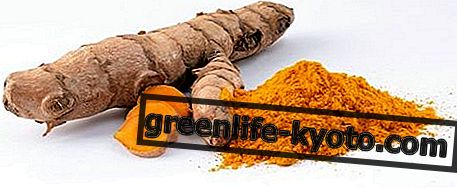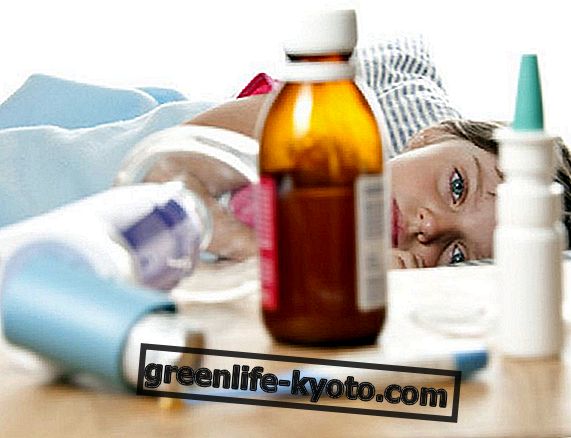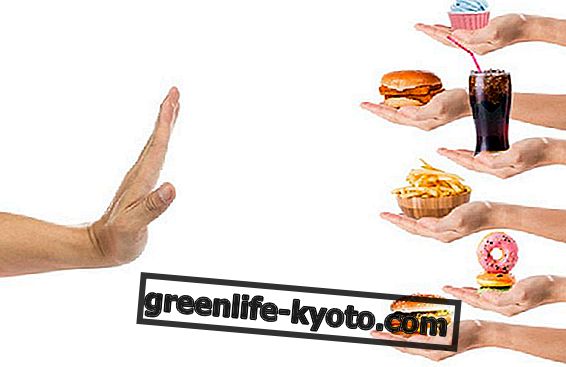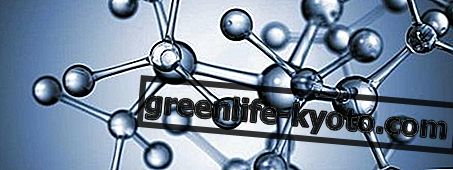
The main energy substrates of the liver are fatty acids . Galactose, mostly obtained from milk, is converted into glucose-1-phosphate in the liver and this in turn is isomerized to glucose-6-phosphate. Fructose converts to fructose -1-phosphate and subsequently enters the glycolytic pathway at the level of triosis phosphate.
Both sugars can also produce acid or amino derivatives used in the formation of glycoproteins.
The liver can also metabolize sugars or sugar derivatives, even different from those mentioned (for example: sorbitol). The liver forms fats from post-prandial glucose; it does not store them but sends them to the adipose tissue for this purpose or to other tissues for energy purposes.
From a nutritional point of view, an important aspect of the postprandial hepatic situation is highlighted by sugars: they, absorbed, coming from the digestion of carbohydrates, are basically transformed into compounds of energy reserve, glycogen and triglycerides, which can be used in interdigestive periods.
This also prevents a rise in blood sugar level. Tissues use glucose (after absorption of carbohydrates ).
For some, such as adipose (or muscle) tissue is one of the fuels par excellence. The consumption of glucose by peripheral tissues produces a gradual decrease in blood sugar levels in the postprandial period.
As a result, hepatic metabolism adapts to send glucose into the circulation. In this context the situation of the nervous system is particularly relevant given its importance for the functioning of the organism and its exclusive dependence on glucose (except in cases of prolonged fasting) as a cellular energy source.
The supply of glucose by the liver is obtained primarily by the degradation of glycogen ( glycogenolysis ) which produces glucose-6-phosphate.
When a nutritional regime has glucose deficiency, the human body can synthesize it from non-carbohydrate molecules and amino acids.
In the liver the metabolic pathways of carbohydrates are realized, ergo the liver is suitable for the following functions:
- Store the surplus of glucose as glycogen, in order to supply glucose to the rest of the tissues in the interdigestive periods.
- Metabolize fructose and galactose: in order to convert them into glucose derivatives or glycolysis intermediates.
- Synthesize glucose derivatives for specific functions.
- Convert some of the glucose into triglycerides to send them to other tissues in the form of lipoproteins.
- Synthesize glucose from non-carbohydrate substrates (gluconeogenesis phenomenon) in a fasting situation.
- Synthesize amino acids from glycolytic and Krebs cycle intermediates.
As a result of intestinal absorption, glucose, fructose and galactose reach the liver. Glucose penetrates into liver cells thanks to the existence of ad hoc carriers, and is phosphorylated by glucokinase, an enzyme with high KM and inducible by substrate and insulin. Even the "carriers" GLUT2 show poor affinity for glucose. In this way, this sugar is metabolized in the liver only when it is in sufficient quantity.
Or it passes through the hepatic sinusoids without being metabolized and ends directly in the systemic circulation through the suprahepatic vein to be used by the other tissues. Galactose and fructose are phosphorylated in the liver by specific low KM kinases, which ensures their metabolization in this organ, passing to the systemic circulation only in case of excess. Hepatic glycogen is the reserve of glucose that can be released into the blood during interdigestive periods.
The amount of glycogen that can be stored in the liver is variable and does not exceed 200 g. While in most tissues glycolysis occurs to metabolize glucose for enegetic purposes, in the liver (and in adipose tissue) the glycolytic pathway works mainly for the synthesis of triglycerides (lipogenesis). In this way the liver channels the excess absorbed glucose that cannot be stored.
Triglycerides can be completely formed from glucose: fatty acids are obtained from acetyl-CoA while glycerol phosphate is obtained from triose phosphates. Both triose phosphate such as acetyl-CoA are products of the glycolytic pathway.
Dulcis in fundo, the reducing power necessary for the synthesis of fatty acids is obtained through the operation of the pentose way.
Hepatic lipogenesis is as important as that produced in adipose tissue.
The major difference between the two tissues is that the hepatic triglycerides are distributed to the rest of the tissues while the triglycerides of adipose tissue are stored in the adipocytes.
This compound can be used for the biosynthesis of polysaccharides (mucopolysaccharides, heparin, etc.) but it is important for hepatic detoxification processes, in which endogenous substances (hormones, bilirubin) or exogenous (medicaments, poisons) conjugating with the glucuronic residue of 'UDP-glucuronate, form non-toxic and water-soluble glucuronides which are then eliminated in the urine.
The pentose phosphate pathway must function significantly in tissues with intense lipogenesis (liver and adipose tissue) as well as in those that have a high level of proliferation, such as the intestinal mucosa.
Glucose can produce other sugars and derivatives (glucosamine, N-acetylglucosamine, etc.) with the membrane glycoproteins final target.
Some glycolytic pathway intermediates can be used for the synthesis of non-essential amino acids. For example, serine is formed from 3- phosphoglycerate and alanine from pyruvate.
The reserve capacity of glycogen is limited and therefore in prolonged interdigestive conditions glucose must be formed from other non-glucidic substances (gluconeogenesis). The liver can synthesize glucose from glycerol (obtained from adipose tissue following triglyceride hydrolysis), lactate (which comes from muscle metabolism and erythrocytes) and from some amino acids, especially alanine (which come from muscle mass).
The glucose metabolism in peripheral tissues has the following specific nuances.
A - Adipose tissue : in adipose tissue, glucose crosses the membrane thanks to a transport mechanism (GLUT4 transporter) with high affinity and stimulated by insulin; this is why this tissue consumes glucose especially in the post-prandial situation, that is when adequate levels of the hormone exist.
As in the other peripheral tissues, the phosphorylating enzyme is the extremely specific hexokinase with low KM, which facilitates the complete metabolization of glucose in the range of its physiological concentrations.
The main fate of glucose in adipocytes is the transformation into triglycerides with a metabolic pathway similar to the hepatic one. This destiny is quantitatively more important than energy production.
B - Skeletal muscle : in skeletal muscle glucose crosses the membrane thanks to a transport mechanism similar to that of adipose tissue (transporter GLUT4) stimulated by insulin and is phosphorylated by a hexokinase.
There is glycogen synthesis, not lipogenesis. Muscle glycogen has reserve functions such as hepatic function; in this case however the glucose coming from this "reserve" is usable only by the muscle cells.
This occurs because the product of glycogenolysis is glucose-6-phosphate, as in the liver, muscle cells are deficient in glucose-6-phosphatase and therefore cannot release glucose into the blood. The degradation of glucose-6-phosphate in the glycolytic pathway can occur in an aerobic or anaerobic condition depending on the intensity of the muscular activity .
When very intense exercise is performed, the need for oxygen to oxidize carbohydrates is high and blood flow may not be sufficient to carry the required amount of oxygen.
In this situation the anaerobic pathway works, lactate is produced which passes into the circulation, it can be subsequently converted into glucose by gluconeogenesis in the liver or kidney or oxidized (especially in the liver and heart muscle) according to the physiological conditions of the individual .













